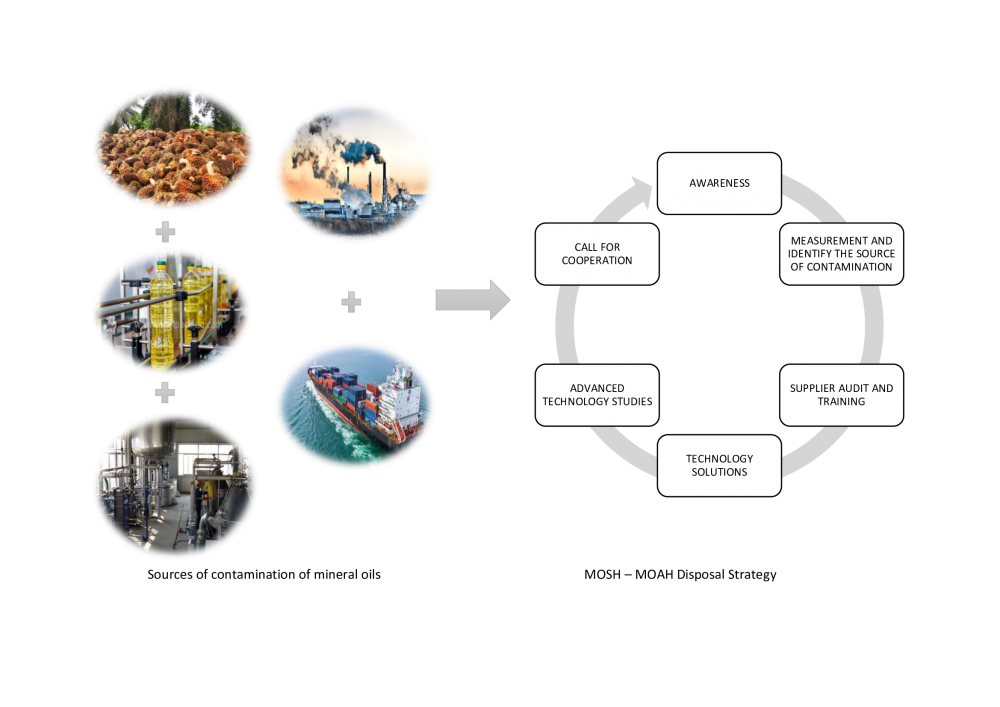JOURNAL 3125
Records of Agricultural and Food Chemistry
Year: 2024 Issue: 3 Special Issue: Abstracts 3rd. TCS, International Food Chemistry Congress February 29-March 03,2024 Antalya Türkiye
p.41 - 41
Viewed 926 times.
GRAPHICAL ABSTRACT

ABSTRACT
Mineral oil (MOH) contamination stands out to be one of major food safety risks for the food industry. MOH comprises two major components namely MOSH and MOAH. MOSH are mainly paraffins of straight and branched alkanes of various C numbers, whereas MOAH refer to mostly alkylated aromatic hydrocarbons. Potential contamination stages of MOH to vegetable oils are agricultural stages, transport of raw material, processing, refined oil transport, packaging, and adulteration-misuse of oils [1]. EFSA opinion on MOH refers to various toxicity limits for MOSH and MOAH, emphasizing MOAH of certain aromatic rings. Unfortunately, there is still uncertainty regarding the maximum limits of MOH for oils. Standard methods of analysis for determination of MOH in vegetable oils is mostly GC-FID. Literature and various chromatographic methods are still being investigated. Mitigation studies for MOH during refining is another crucial area for oil manufacturers. Food safety policy of IFFCO Turkey realizes the principle of being the pioneer of the oils, fats, margarine sector. We achieved a sustainable mitigation strategy for the last challenge of contaminants namely GE and 3-MCPDE. In this presentation IFFCO strategy on detection, determination, prevention, and mitigation of MOH will be summarized by our quality and R&D team [2,3].
KEYWORDS- MOH
- food safety
- mitigation